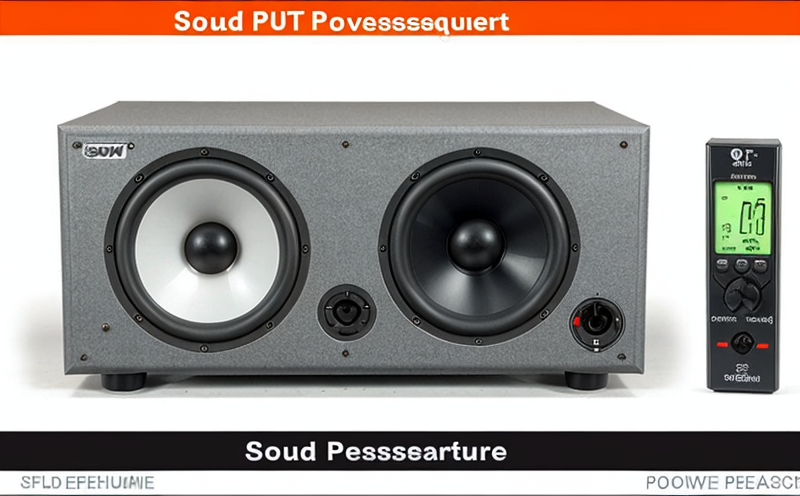ISO 9614-1 Determination of Sound Power Using Sound Intensity – Part 1
The ISO 9614-1 standard is a widely recognized method for determining sound power levels using the measurement of sound intensity. This technique offers significant advantages over traditional methods, particularly in environments where reverberant or complex noise fields are present. The primary principle behind ISO 9614-1 involves measuring the acoustic field through two perpendicular planes and calculating the average power flow across these planes.
The process begins with a detailed setup that includes placing an intensity probe in a defined area, ensuring that the measurement is free from interference from external sources of noise. The probe measures the vector product of pressure and velocity fields, providing accurate data about both components. This approach eliminates the need for extensive sound field modeling or complex boundary conditions, making it more practical and efficient.
The testing process typically involves several stages: first, the initial setup where the probe is positioned in a controlled manner to avoid any shadow effects from obstacles or structures within the test area. Following this, calibration of the equipment ensures that all measurements are accurate and consistent with international standards. During the actual measurement phase, careful attention must be paid to minimize background noise and ensure that the probe captures only the desired acoustic signals.
Theoretical considerations play a crucial role in understanding how sound intensity can provide reliable results. For instance, the concept of reciprocity ensures that regardless of the direction from which the sound travels, the measured power remains constant. Additionally, knowledge about the geometry of the test area helps in determining appropriate measurement points and ensuring that all critical areas are covered.
Real-world applications of ISO 9614-1 demonstrate its versatility across various sectors such as automotive manufacturing, aerospace engineering, and building acoustics. In automotive applications, it is used to assess engine noise contributions during development stages. Aerospace uses this method for evaluating the structural integrity of aircraft components under high-frequency vibrations. For buildings, it aids in designing spaces that meet international sound insulation standards.
Calibration plays a vital role in maintaining accuracy throughout testing cycles. Regular calibration checks ensure consistent results and help identify any drifts or inconsistencies in instrument performance over time. Proper maintenance practices include routine cleaning of probes to prevent dust accumulation which could affect readings, periodic verification against known reference sources, and adherence to manufacturer guidelines for storage conditions.
The use of advanced software tools enhances the analysis process by automating complex calculations and visualizing data trends easily. These platforms offer features like real-time plotting capabilities, automated report generation, and integration with other CAD systems for seamless workflow management.
Industry Applications
Aerospace Industry: Evaluating structural health monitoring of aircraft components subjected to high-frequency vibrations during flight tests.
Automotive Manufacturing: Assessing engine noise levels during development phases before final product launch.
BUILDING ACOUSTICS: Designing sound-insulating walls and floors in commercial spaces complying with international standards like ISO 140-3.
Machinery Testing: Measuring machine-generated noises in industrial settings to comply with occupational health & safety regulations (OSHA).
By leveraging these methods, industries can ensure they meet stringent quality control requirements while also enhancing product performance and user experience.
Eurolab Advantages
EuroLab prides itself on delivering comprehensive acoustics testing services tailored to your specific needs. Our state-of-the-art facilities equipped with the latest technology ensure precision measurements that adhere strictly to international standards such as ISO 9614-1.
Experienced Technicians: Highly trained professionals who understand the intricacies of each test procedure and can provide valuable insights into potential improvements.
Advanced Equipment: Utilizing cutting-edge instrumentation designed specifically for accurate sound intensity measurements, guaranteeing reliable results every time.
We offer a range of services including but not limited to ISO 9614-1 compliance checks, custom calibration solutions, and training programs aimed at equipping your team with the necessary skills. With us, you get more than just testing; you gain access to expert knowledge and support throughout your project lifecycle.
Quality and Reliability Assurance
EuroLab is committed to maintaining high standards of quality and reliability in all our services. We have implemented robust quality management systems that comply with international best practices, ensuring consistent accuracy and precision in our measurements.
Compliance Checks: Regularly conducted audits ensure adherence to relevant standards including ISO 9614-1, thereby providing peace of mind regarding regulatory compliance.
Data Validation: Each set of data undergoes rigorous validation processes before being reported out. This includes cross-referencing with historical data and conducting additional checks where necessary.
By adhering to these stringent protocols, we ensure that all clients receive reliable outputs they can trust. Our commitment extends beyond mere compliance; it encompasses continuous improvement efforts aimed at staying ahead of industry trends and advancements.





